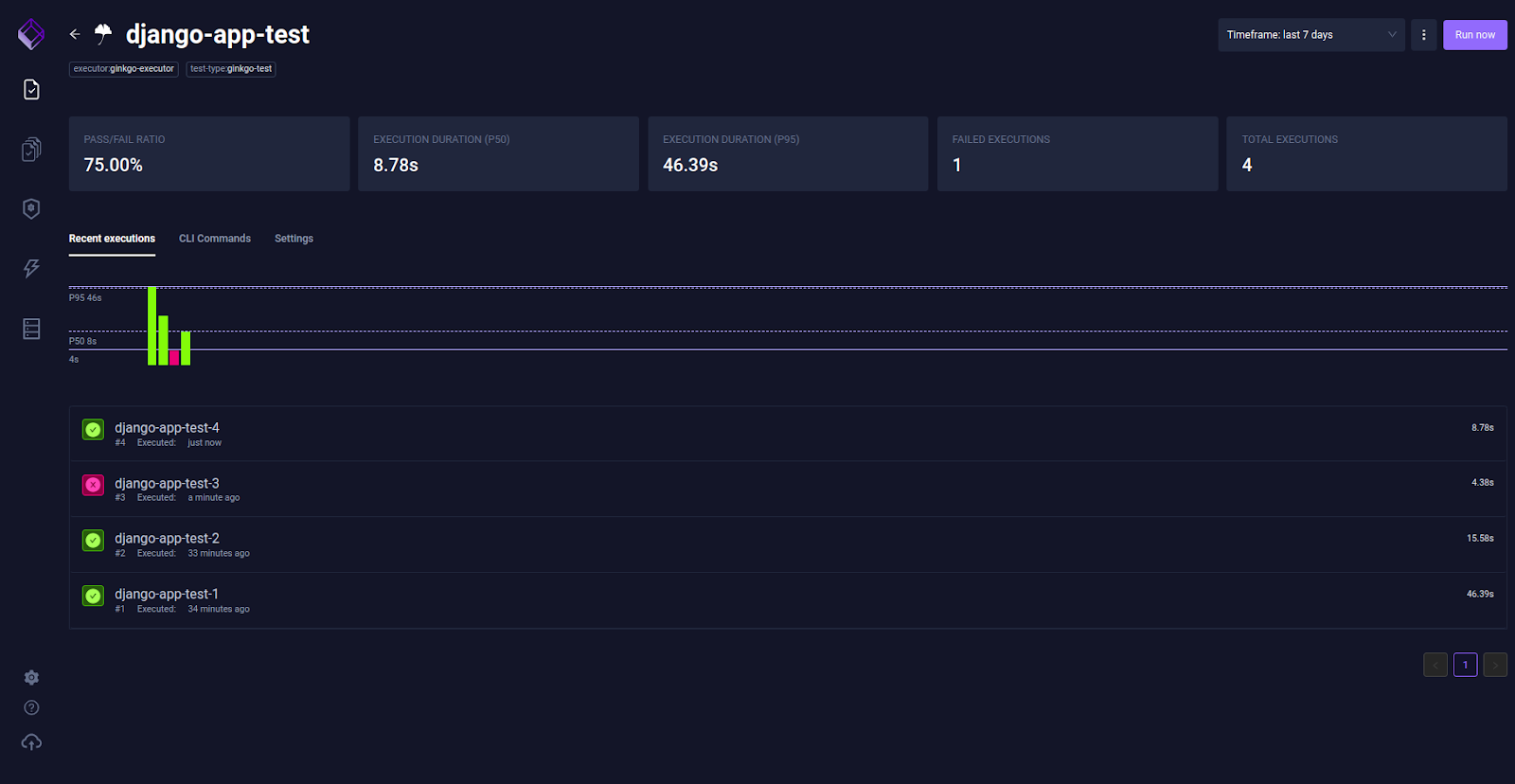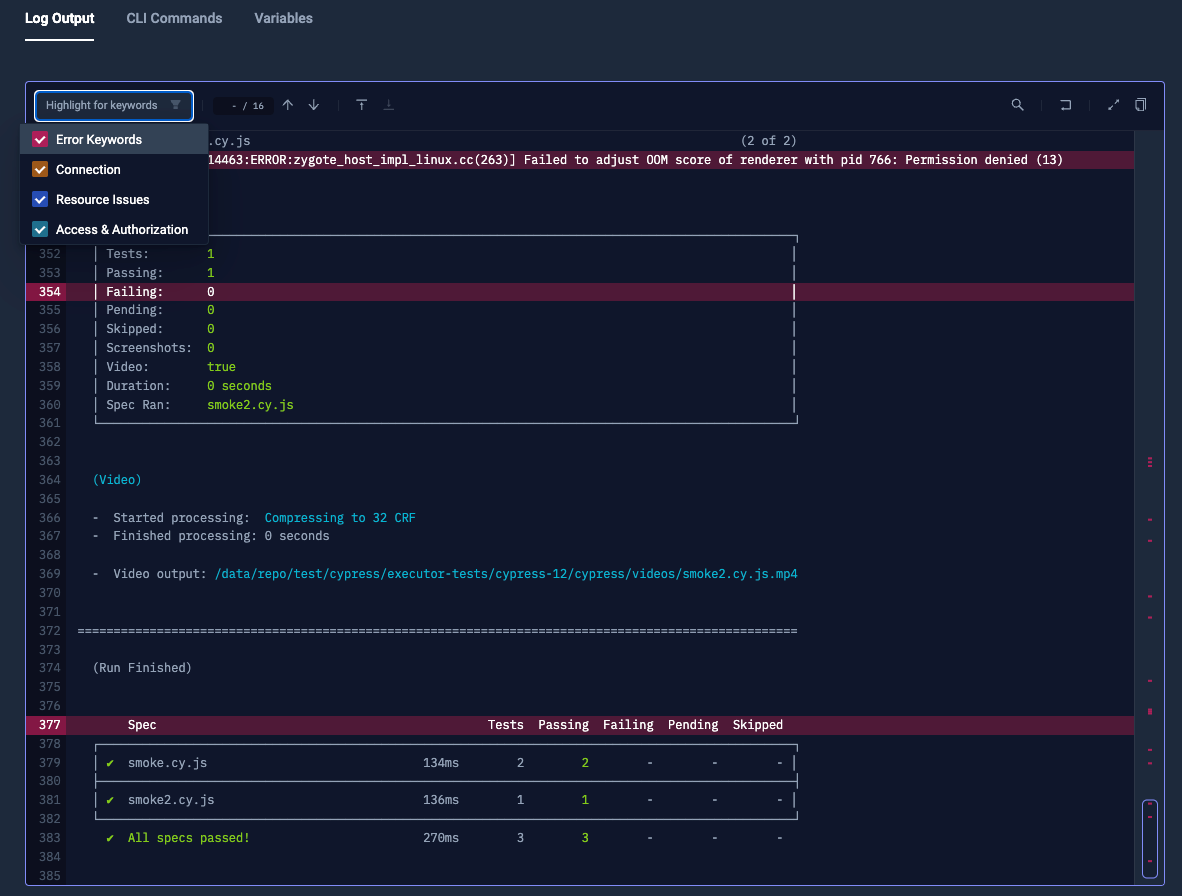

Table of Contents
Try Testkube instantly in our sandbox. No setup needed.
Try Testkube instantly in our sandbox. No setup needed.




Table of Contents
Executive Summary
When we deploy applications, our aim is for them to run smoothly without glitches. To make sure, we rely heavily on monitoring and logging to provide visibility to our applications. But how much visibility do you have on the tests that you perform against your applications ?
In this blog post, we’ll shed light on the importance of observability in testing and how, with the help of real-time visibility, detailed insights, and trend analysis, we can make the process transparent and efficient while making our applications robust and secure.
Why Test Observability?
The set of testing tools we use and the practices we follow still need to catch up with the pace at which development and deployment processes are evolving. Most of the testing tools and processes lack visibility, which makes it difficult to make good decisions and improve the testing process.
Let us look at some of the test observability gaps.
Real-time Visibility Gap
When you have a simple architecture with just a few tests running with little to no concurrency, achieving real-time visibility may be more simple. However, it becomes exponentially more complicated when you begin to scale to multiple microservices and tests running in concurrency.
Many existing testing tools lack immediate visibility into such scenarios. This hampers the ability to detect issues at the moment they occur since no real-time insights are available. When there are lots of tests running at once, testers struggle to visualize the behavior of all the tests and applications. This often leads to delayed root cause analysis and identification of failures.
For instance, without real-time insights during simultaneous load tests, testers might miss identifying a sudden surge in response times if the tools don’t provide real-time visibility.
Limited Test Data Gap
The second challenge begins after testing is completed. You want to know how your applications and environments behaved during testing.
However, with the current set of tools, it’s hard to see what happened during the test execution. With limited data available, your testers will lack a clear understanding of what went wrong. It's tough to find out what went wrong when you are blind.
For example, the existing tool might only show pass or fail outcomes in a regression test without detailed logs or breakdowns, which is insufficient.
Lack of Trend Analysis
Applications are dynamic in nature; they change over time. And when applications change, tests change, too. With time, the app’s endpoints shift, logic changes, and updates happen; it’s difficult to keep up with the changes. These changes can affect the coverage, slow testing, and cause more defect slippage from a testing point of view. That’s where your tools should show you the trends of test executions.
For example, the system might not highlight recurring patterns in intermittent failures in a test suite with multiple iterations of tests. This limitation leads to improper or no recognition of the sporadic issues.
Lack of Iterative Improvement Framework
Inadequate trend insights and poor analysis of your tests hinder your ability to make improvements to your testing workflows. Without a systematic framework to understand the changing trends or gather essential insights, the question 'How can we improve?' becomes hard to answer. Building a framework for iterative improvement becomes challenging without crucial data to guide us.
And this is where observability in testing comes in. It not only addresses these issues and provides visibility into testing but also goes beyond - improving the way you test, elevating application security and overall testing efficiency.
Observability in Testing Using Testkube
Testkube is a comprehensive test orchestration framework designed to make testing easier and more efficient. It acts as a single pane of glass, giving you invaluable insights into your testing processes. It gives teams real-time visibility into test runs, details of application behavior, and comprehensive trend analysis.
Regardless of the testing tools you use, you can bring them to Testkube, to enable full visibility into your test executions. And with each execution, Testkube provides comprehensive information that helps you better understand the test results. Below are some of the metrics that Testkube provides:
- Real Time Visibility: Testkube allows you to run tests on Kubernetes by bringing your existing testing tools. It manages and schedules tests in real time on different clusters and also gives you real-time visibility to your tests. So you know exactly what’s happening with your applications.

- Test Insights: Unlike other testing frameworks. Testkube provides you with detailed information about your test executions that allows you to understand any underlying issues quickly. With features like log highlighting and retrieval of test artifacts, Testkube provides insights into your tests and your application's behavior.

- Test Trends: Testkube understands the dynamic nature of tests and hence provides you with a trend graph and metrics to help you understand how your tests have performed over a period of time. From showing you the average duration of execution to providing a pass/fail ratio for tests, trends in Testkube help you debug your tests’ performance over time.

While testing with Testkube provides valuable information regarding your tests in a single tool, it also helps you improve your testing performance. With features like AI analysis, Testkube leverages ChatGPT to analyze test logs and give you suggestions on how to fix them.

In addition, with Status pages, you can use your existing tests to monitor the status of your applications by creating status pages for monitoring. Lastly, you can also use webhooks in Testkube to send your test observability data to your existing monitoring tool for alerting.
Summary
From poor trend analytics to limited testing insights, limitations within our current testing practices highlight the critical need for change. Observability in testing overcomes these shortcomings.
With Testkube, you can bring your existing testing tools into one interface and let Testkube provide in-depth insights into your testing operations. These valuable insights make your testing process more efficient and enable them for continuous improvement.
Get started with Testkube and experience all the features that it brings to the table. You can also join our Slack community for guidance and support.


About Testkube
Testkube is a cloud-native continuous testing platform for Kubernetes. It runs tests directly in your clusters, works with any CI/CD system, and supports every testing tool your team uses. By removing CI/CD bottlenecks, Testkube helps teams ship faster with confidence.
Explore the sandbox to see Testkube in action.






